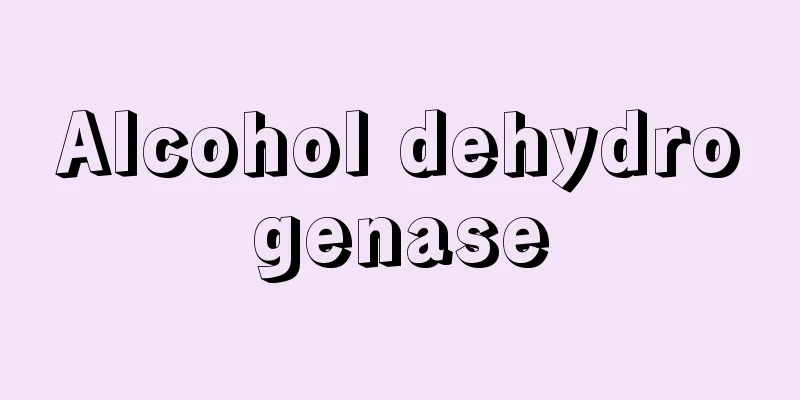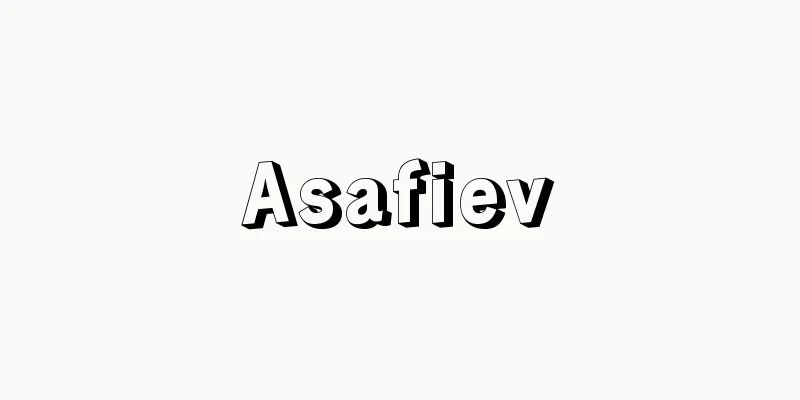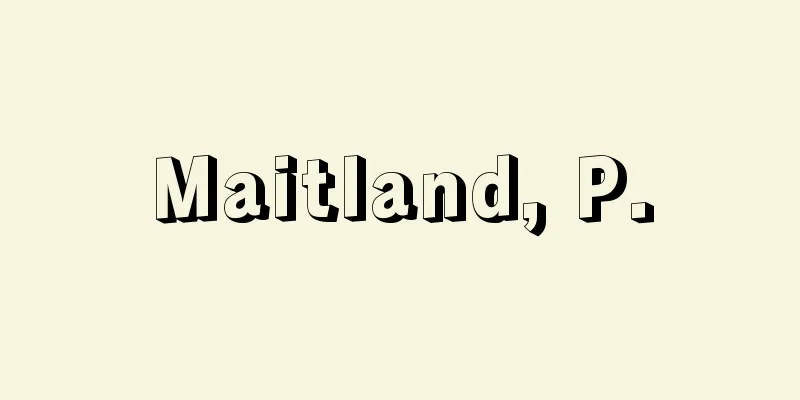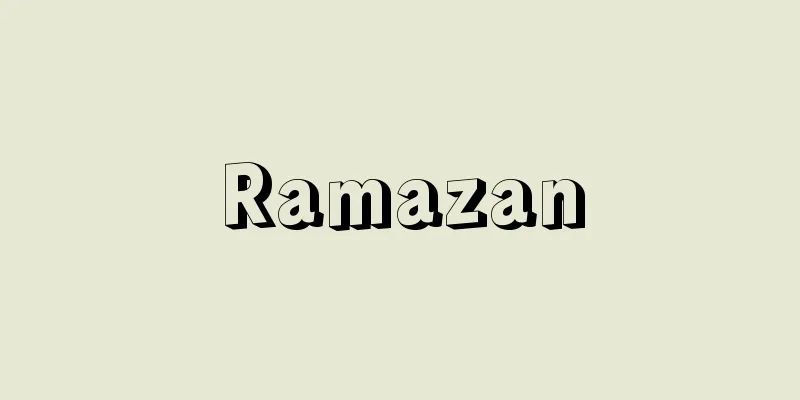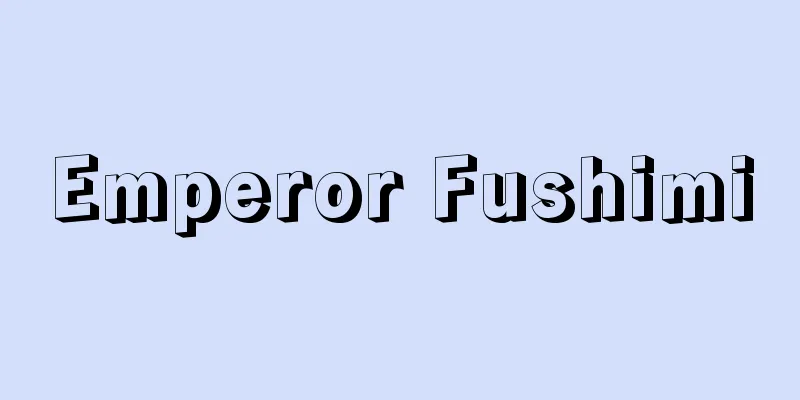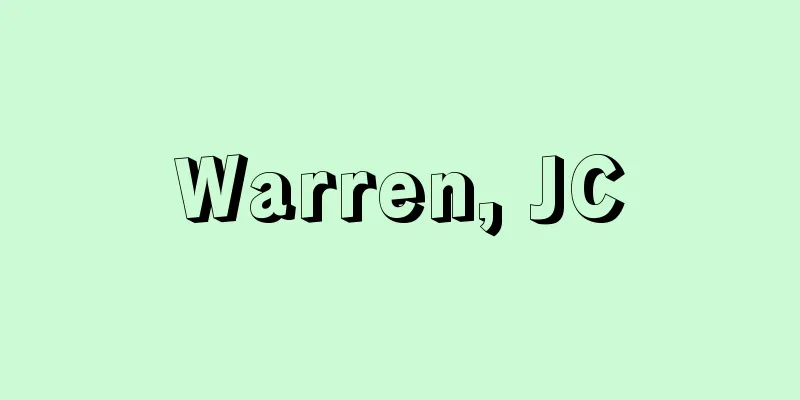Reinforcement - Kyouka (English spelling)
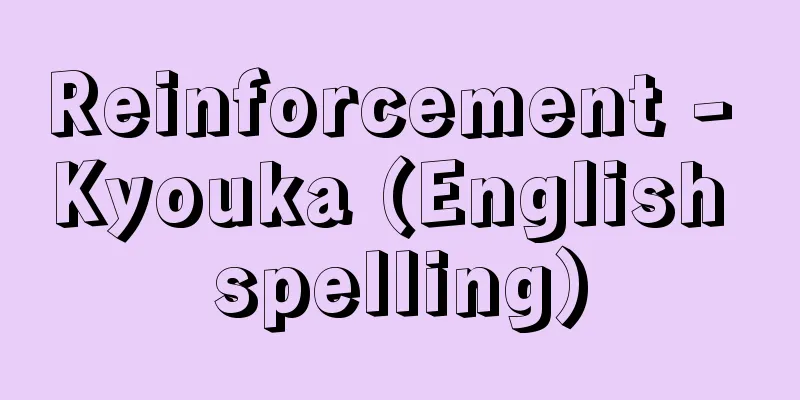
|
Reinforcement refers to the presentation of a positive reinforcer (a reinforcer is a stimulus presented in association with a response) in association with a spontaneous response, or the removal of a negative reinforcer, or to an increase in a response through such manipulation. The term reinforcement (or reinforcement manipulation) is sometimes used in respondent conditioning, but it refers to the pairing of a conditioned stimulus with an unconditioned stimulus. In operant conditioning, unlike respondent conditioning, the role of stimuli is not to induce (function), but to act as a cue (discriminative stimulus) that induces a spontaneous response and to strengthen (or weaken) the response, with the role of the stimulus as a reinforcer that strengthens or weakens the response being particularly important. Reinforcement can be defined from two aspects: the manipulation of stimuli and the change in responses. Combining the presentation and removal of stimuli as stimulus manipulation and the increase and decrease of responses as response changes, there are four types, as shown in the table. The increase in a response caused by presenting a stimulus in association with a response is called positive reinforcement, and the increase in a response caused by removing or delaying a stimulus in association with a response is called negative reinforcement. In addition, the decrease in a response caused by presenting a stimulus in association with a response is called positive punishment, and the decrease in a response caused by not presenting a stimulus is called negative punishment. The decrease in a response weakens the response, so these are called weakening (also called punishment) as they represent the opposite process of reinforcement. Examples of negative punishment include the withholding of the reinforcer through an extinction procedure and the removal of the opportunity to respond (time-out). A stimulus that decreases a response when presented or increases a response when removed is called a negative reinforcer, while a stimulus that increases a response when presented or decreases a response when removed is called a positive reinforcer. The circumstances under which a stimulus acts as a reinforcer are a matter of motivation, but it is not only things such as food and water that act as reinforcers. In humans, gestures such as a "nod," verbal responses such as "yes" or "that's right" (verbal conditioning), and even verbal praise can act as reinforcers. Doing something can also strengthen a response (Premack's Reinforcement Principle, which will be described later). In order for food and water to function as reinforcers, it is necessary to carry out deprivation manipulations, such as making the subject hungry or thirsty. Conversely, to prevent them from functioning as reinforcers, it is necessary to carry out satiation manipulations, such as making the subject full or providing them with plenty of water. These are examples of motivation manipulations in operant conditioning. [Punishment and negative reinforcement] While reinforcement strengthens behavior, punishment weakens it. The effect of punishment is temporary and does not last long, but the degree to which the behavior is suppressed depends on the frequency with which an aversive stimulus (negative reinforcer) such as an electric shock is presented and on past experiences. Church, RM (1959) found that when rats who were pressing a lever to get food heard the screams (aversive stimuli) of rats that had received an electric shock, the lever-pressing response was temporarily suppressed, and that this suppressive effect (effect of punishment) lasted longer for rats that had received an electric shock in the past. This fact is thought to be due to the association of the rat's own screams with the electric shock (association hypothesis). In addition to the effects of punishment itself, punishment can have side effects such as aggressive behavior toward other individuals or some external object, and punishment can also serve as a cue (discriminative stimulus) for various behaviors, including aggressive behavior. Behavior that removes an aversive stimulus or delays its presentation is called avoidance behavior. On the other hand, behavior that escapes from a presented aversive stimulus is called escape behavior. The effect of negative reinforcement that strengthens avoidance behavior depends on the degree to which the aversive stimulus can be removed and the length of time the presentation of the aversive stimulus is delayed. Both of these behaviors are thought to be formed and maintained by negative reinforcement. In this respect, positive reinforcement and negative reinforcement are in a symmetrical relationship in that the effects of strengthening behavior are the presentation and removal of the reinforcer. Sidman, M. (1953) used a procedure in which short-duration electric shocks (several hundred milliseconds each) were presented at regular intervals (e.g., a 5-second stimulus-stimulus interval (;) S-S 5 seconds), and if a reaction occurred, the presentation of the next electric shock was postponed (e.g., a 20-second response-stimulus interval (;) R-S 20 seconds). He found that the shorter the interval between electric shocks (the higher the presentation frequency), the more frequently rats pressed the lever to avoid electric shocks. This procedure is called the Sidman avoidance behavior procedure. In the case of positive reinforcement using food as the reinforcer, the frequency of the response (number of responses per unit time) is determined by the frequency of the presentation of the reinforcer (number of reinforcements per unit time), so it is thought that a reduction in the frequency of the presentation of the negative reinforcer, the electric shock, led to an increase in the lever-pressing response. To understand such avoidance behavior, it is important to consider its relationship with defense reactions that organisms have innately (e.g., jumping and crouching in mice, and jumping and flapping of wings in pigeons) and with emotions acquired through experience. The former is called species-specific defense reaction (SSDR) (Bolles, RC, 1970). [Unconditioned reinforcers and conditioned reinforcers] Reinforcers can be broadly divided into stimuli that have an innate reinforcing function, such as food and water, and stimuli that acquire a reinforcing function through individual experience. The former are called primary reinforcers or unconditioned reinforcers, and the latter are called secondary reinforcers or conditioned reinforcers. Presenting a conditioned reinforcer in conjunction with a response is called conditioned reinforcement. Examples of conditioned reinforcers include the light that turns on when a food dish is presented in an experimental box and the sound of the food dish moving. The light and sound of the food dish are thought to become conditioned reinforcers through the experience of always being presented in conjunction with food, which is an unconditioned reinforcer. In other words, the formation of conditioned reinforcers is based on the process of respondent conditioning. In the same way, by pairing a conditioned reinforcer with a third new stimulus, the third stimulus can also be given the function of a reinforcer. Since this procedure is thought to be valid for n-th order in theory, it is called higher-order conditioning. In conditioned reinforcement experiments using chimpanzees, they are first trained to place a token (substitute currency) into a feeding device and eat the food, and then trained to press a lever to obtain the token. In this training, the lever-pressing response is reinforced with the token, and the response of placing the token into the feeding device is reinforced with food. After experiencing this type of training, chimpanzees will try to press the lever to obtain the token. In this case, the token can be said to act as a conditioned reinforcer. Conditioned reinforcers play a major role in maintaining complex behaviors. In the previous example, the lever-pressing response is linked to the response of putting a token into the food dispenser. In this example, the token acts as a reinforcer for the lever-pressing response, and as a discriminative stimulus for the response of putting the token into the food dispenser. In other words, the token can be said to have a dual role (function). This relationship can be extended to several other responses. This is called behavioral chaining. It is important to note that this behavioral chain is ultimately reinforced by an unconditioned reinforcer. The various complex behaviors that we perform can be thought of as being made up of a number of simple behaviors linked together through these conditioned reinforcement and discriminative stimulus functions. [Various reinforcers] Various things have been found to act as reinforcers. For example, the change in stimulus itself can act as a reinforcer. If a contingency is set up so that a certain sound is presented when a rat presses a lever, the lever-pressing response is maintained to a certain extent. In this case, the stimulus change of presenting the sound is thought to act as a reinforcer. This is called sensory reinforcement. Sensory reinforcement serves as a comparison standard (baseline) when measuring the various effects of stimuli. A social situation is one in which other individuals are present, and the presence of other individuals can act as a reinforcer. For example, it is known that when a chick pecks at food, it eats more when other individuals are present than when it pecks alone. This is called social facilitation. It has also been shown that rhesus monkeys prefer to see other individuals when a window is open, rather than when they cannot see them. In this way, the presence of other individuals is thought to act as a reinforcer. This is called social reinforcement. In verbal conditioning experiments with humans, verbal responses such as "good" or "hmm" are presented contingently to a particular verbal response from the subject. This has been shown to increase the frequency of the particular verbal response. This shows that verbal behavior can be transformed by operant conditioning, and that the contingent verbal response acts as a verbal reinforcer. In the 1950s, Olds, J. and Milner, P. developed a method in which electrodes were implanted in various locations in the brains of rats, and a weak electric current was sent through the brain for a short time when the rat pressed a lever. This method is called the intracranial self-stimulation method. When this contingency was set up, it was found that frequent lever-pressing responses occurred in specific parts of the brain (e.g., the limbic system). This fact means that electrical stimulation of the brain acts as a reinforcer. It also suggests that the center of the reinforcer function is in a specific part of the brain, but subsequent research has revealed that intracranial self-stimulation as a reinforcer has different aspects from primary reinforcers such as food and water (Hursh, SR, & Natelson, BH, 1981). [Measurement of reinforcing effect] The question of how effective a certain reinforcer is (its potency as a reinforcer) is important when considering the issue of reinforcement. Whether or not there is a reinforcing effect can be determined by observing to what extent a response can be maintained by presenting the reinforcer. In addition, it can also be examined from the perspective of resistance when a new operation is performed. For example, a method of observing to what extent a response is maintained when the reinforcer is no longer presented is to look at resistance to the extinction procedure (extinction resistance). High resistance (response is maintained) indicates a strong reinforcing effect, and low resistance (response is not maintained) indicates a weak reinforcing effect. On the other hand, by presenting a reinforcer for all stimuli, it can also be observed from the resistance to the procedure of presenting a new reinforcer (reinforcement resistance). There is also a method of observing to what extent a previous behavior is maintained by presenting a reinforcer that is not dependent on the response (response reduction operation) for a behavior that is maintained by a certain reinforcement schedule. The extent to which a previous behavior is maintained is thought to depend on the effectiveness of the reinforcer that maintained the previous behavior. This can be considered resistance to new changes (change resistance). [Premack's Reinforcement Principle] Premack, D., has clarified that not only food and water, but also engaging in some kind of activity has a reinforcing effect. He found that there is a hierarchy in the likelihood of behavior occurring when there are no constraints, measured by the time spent engaged in the activity. For example, if a rat is placed in a cage equipped with a running cage, a lever, and a water tube, the hierarchical structure is as follows, from least likely to most likely: lever pressing → cage spinning → drinking water. Premack's reinforcement principle holds that "activities higher in the hierarchy of likelihood (activities that are likely to occur) can reinforce activities lower in the hierarchy (activities that are less likely to occur)." In other words, the response of drinking water serves as a reinforcer for the cage spinning response, strengthening the cage spinning response, and the cage spinning response serves as a reinforcer for the lever pressing response, strengthening the lever pressing response. The figure shows the results of Premack's experiment (1963). When the probability of occurrence (baseline probability) of various drinking responses (16%, 32%, 64% sucrose solution), wheel running responses (heavy, light), and lever pressing responses was examined as a baseline (standard) without contingencies between responses, the order of least likely to occur was lever pressing response, heavy wheel running response (HW), drinking response (64% sucrose solution), light wheel running response (LW), drinking response (32% sucrose solution), and drinking response (16% sucrose solution). In order to examine their function as reinforcers, these responses were associated with the least likely lever pressing response, and it was shown that the more likely they were to occur at the baseline, the more reinforcing they were. In addition, the hierarchical structure of the likelihood of occurrence of activity is not fixed, and if the constraints change, this hierarchical structure will also change, so it can be said that the relationship between the side that reinforces the response and the side that is reinforced will also change. This is called the reversibility of reinforcement relationships (Premack, 1963, 1971). Later, Premack's principle of reinforcement was reexamined from the perspective of constraints imposed by reinforcement schedules, and developed into the response deprivation theory (Timberlake, W., & Allison, J., 1974). In this response deprivation theory, it is believed that responses with greater constraints imposed by a reinforcement schedule act as reinforcers for responses with lesser constraints. In other words, unlike Premack's principle of reinforcement, the function of a response as a reinforcer does not depend on the likelihood of the response occurring at the baseline. → Operant conditioning → Reinforcement schedule [Masato Ito] (Modified from Premack, 1963) Figure: Baseline response and... "> Table Definition of reinforcement Latest Sources Psychology Encyclopedia Latest Psychology Encyclopedia About Information |
|
強化とは,自発された反応に随伴して正の強化子(強化子reinforcerとは,反応に随伴して呈示される刺激を指す)を呈示するか,負の強化子を除去すること,あるいは,このような操作により反応が増加することである。レスポンデント条件づけでも強化(または強化工作)という用語を使う場合があるが,これは条件刺激と無条件刺激との対呈示のことを指している。オペラント条件づけでは,レスポンデント条件づけとは異なって,刺激の役割は,誘発的な働き(機能)ではなく,反応を自発する手がかり(弁別刺激)としての働きと,反応を強める(または弱める)働きにあるが,とりわけ反応を強めたり弱めたりする強化子としての働きが重要である。 強化は,刺激の操作と反応の変化の二つの側面から定義することができる。刺激操作として刺激の呈示と除去,反応の変化として反応の増加と減少を組み合わせれば,表に示したように4通りになる。反応に随伴して,刺激を呈示することで,反応が増加することを正の強化positive reinforcement,反応に随伴して,刺激を除去または遅延させることで,反応が増加することを負の強化negative reinforcementとよぶ。また,反応に随伴して刺激を呈示することで,反応が減少することを正の罰positive punishment,刺激を呈示しないことで,反応が減少することを負の罰negative punishmentとよぶ。反応が減少することは,反応を弱めることになるので,これらを強化と反対の過程を表わすものとして弱化(罰punishmentともいう)という。負の罰の例としては,消去手続きにより強化子を呈示しないことや,反応する機会を除去すること(タイムアウト)という操作が挙げられる。 呈示することで反応を減少させるか,除去することで反応を増加させる働きをもつ刺激を負の強化子negative reinforcer,呈示することで反応を増加させるか,除去することで反応を減少させる働きをもつものを正の強化子positive reinforcerという。刺激がどのような場合に強化子としての働きをもつかは,動機づけの問題であるが,強化子としての働きをもつのは食物や水などのモノだけではない。ヒトの場合には,「うなずき」という身振りや,「はい」や「そうですね」という言語反応(言語条件づけ),さらにことばによる賞賛も強化子になる。また,何かをするコトも反応を強める働きをもつ(後述するプレマックの強化原理)。 食物や水を強化子として働かせるためには,空腹にすることや,喉が渇いた状態にする遮断化deprivationという操作を行なう必要がある。また,逆に強化子として働かなくなるようにするには,満腹にすることや,水を十分に与えるという飽和化satiationという操作が必要になる。これらは,オペラント条件づけにおける動因操作の一例である。 【罰と負の強化】 強化が行動を強めるものであるのに対し,罰は行動を弱めるものである。罰の効果は,長くは続かない一時的なものであるが,行動が抑制される程度は,電気ショックのような嫌悪刺激(負の強化子)が呈示される頻度や過去経験による。チャーチChurch,R.M.(1959)は,餌を得るためにレバー押しを行なっているネズミに,電気ショックを受けたネズミの悲鳴(嫌悪刺激)を聞かせたところ,レバー押し反応が一時的に抑制されること,またこの抑制効果(罰の効果)は,過去に電気ショックを受けた経験のあるネズミほど持続することを見いだした。この事実は,過去の自らの悲鳴が電気ショックと結びついたため(連合仮説)であると考えられている。罰は,罰そのものの効果以外に,副作用として,他個体やなんらかの外的対象に対する攻撃行動が起きることや,罰が攻撃行動をはじめとするさまざまな行動の手がかり(弁別刺激)になる場合がある。 嫌悪刺激を取り除いたり,嫌悪刺激の呈示を遅らせたりする行動は,回避行動avoidance behaviorとよばれる。一方,呈示された嫌悪刺激から逃れる行動は,逃避行動escape behaviorとよばれる。回避行動を強める負の強化の効果は,嫌悪刺激を取り除ける程度や嫌悪刺激の呈示を遅らせる時間の長さに依存する。これらの行動は,いずれも負の強化により形成・維持されていると考えられる。この点で,正の強化と負の強化は,行動を強める働きが強化子の呈示と除去という対称的な関係にある。シドマンSidman,M.(1953)は,短い持続時間の電気ショック(1回数百ミリ秒)を一定間隔で呈示(たとえば,5秒の刺激-刺激間隔(;)S-S5秒)し,反応が生じると反応から次の電気ショックの呈示が延期される(たとえば,20秒の反応-刺激間隔(;)R-S20秒)手続きを用いて,電気ショックを回避するネズミのレバー押し反応が,電気ショックの呈示間隔が短いほど(呈示頻度が高いほど),高頻度で生じることを見いだしている。この手続きを,シドマン型回避行動Sidman avoidance behaviorの手続きという。 食物を強化子とした正の強化の場合には,強化子の呈示頻度(単位時間当たりの強化数)により反応の生起頻度(単位時間当たりの反応数)が決まるように,電撃という負の強化子の呈示頻度の減少がレバー押し反応の増加をもたらしたと考えられる。 このような回避行動を理解するには,生物が生まれつきもっている防御反応(たとえば,ネズミの場合には跳び上がったり,うずくまる反応,ハトの場合は飛び上がったり,羽をばたつかせる反応)との関係や,経験を通して獲得される情動との関係が重要である。前者は,種に特有な防御反応species-specific defense reaction(SSDR)とよばれている(Bolles,R.C.,1970)。 【無条件性強化子と条件性強化子】 強化子には,大別すると,食物や水など生得的に強化機能をもつ刺激と,個体の経験を通して強化機能を獲得する刺激がある。前者を1次性強化子あるいは無条件性強化子unconditioned reinforcer,後者を2次性強化子あるいは条件性強化子conditioned reinforcerとよぶ。反応に随伴して条件性強化子を呈示することを,条件性強化conditioned reinforcementという。条件性強化子の例として,実験箱に見られる,餌皿の呈示時に点灯される照明や餌皿の動作音などが挙げられる。餌皿の照明や動作音は,いつも無条件強化子である餌と対になって呈示されるという経験を通して,条件性強化子になると考えられる。つまり,条件性強化子の形成は,レスポンデント条件づけの過程に基づいている。同じように,条件性強化子と第3の新たな刺激を対にして呈示することにより,この第3の刺激にも強化子の働きを付与することができる。このような手続きは,理論上n次について成立すると考えられるので,これを高次条件づけhigher-order conditioningという。 チンパンジーを用いた条件性強化の実験では,まず最初に,トークン(代用貨幣)を給餌装置に入れて,餌を食べるという訓練を行ない,続いてレバーを押して,トークンを手に入れるように訓練する。この訓練では,レバー押し反応はトークンで強化され,トークンを給餌装置へ入れる反応は餌で強化されている。このような訓練を経験したチンパンジーは,レバーを押してトークンを手に入れようとする。このとき,トークンは条件性強化子としての働きをもっているといえる。 条件性強化子は,複雑な行動の維持に大きな役割を果たしている。前述の例でも,レバー押し反応とトークンを給餌装置に入れる反応が結びつけられている。この例で,トークンはレバー押し反応に対して強化子として働き,給餌装置に入れる反応に対しては,弁別刺激として働いているのである。つまり,トークンは,二重の働き(機能)をもっているといってよい。このような関係は,さらにいくつかの反応にも拡張することができる。これを行動の連鎖chainingという。この行動の連鎖は,最終的には,無条件性強化子により強化されていることに注意が必要である。われわれが行なっているさまざまな複雑な行為は,このような条件性強化機能と弁別刺激機能を介して,単純な行為をいくつも結びつけたものと考えられる。 【さまざまな強化子】 これまで強化子としてさまざまなものが見いだされてきた。たとえば,刺激変化そのものが強化子として働くことがある。ネズミがレバーを押すとなんらかの音が呈示されるような随伴性を設定しておくと,ある程度レバー押し反応が維持される。この場合,音の呈示という刺激変化が強化子として働いていると考えられる。これを感性強化sensory reinforcementという。感性強化は,刺激のさまざまな効果を測定するときの比較の基準(ベースライン)となる。 社会的場面とは,他個体が存在する場面であるが,他個体の存在が強化子として働く場合がある。たとえば,ヒヨコが餌をついばむとき,他個体が存在している場合の摂食量は,単独でついばむときの摂食量よりも増加することが知られている。これを社会的促進social facilitationという。また,アカゲザルでは,窓を開けると他個体が見えない場合よりも,見える場合を好むことが認められている。このように,他個体の存在は強化子として働くと考えられる。これを社会強化social reinforcementという。 ヒトの言語条件づけの実験では,被験者の特定の言語反応に対して,「よし」,「ふむふむ」などという言語反応が随伴呈示される。この結果,特定の言語反応の生起頻度が増加することが示されている。この事実は,言語行動がオペラント条件づけにより変容すること,および随伴呈示される言語反応が言語的強化子として働くことを示している。 1950年代にオールズOlds,J.とミルナーMilner,P.は,ネズミの脳のさまざまな場所に電極を植え,ネズミがレバーを押すと短い時間,微弱な電流が流れる方法を開発した。これを脳内自己刺激法intracranial self-stimulation methodという。このような随伴性を設定したところ,脳の特定部位(たとえば大脳辺縁系)では,頻繁なレバー押し反応が起きることを見いだした。この事実は,脳の電気的刺激が強化子として働くことを意味している。また,強化子としての働きの中枢が脳の特定部位にあることを示唆するものであるが,強化子としての脳内自己刺激は,食物や水などの1次性強化子とは異なる側面のあることもその後の研究で明らかになっている(Hursh,S.R., & Natelson,B.H.,1981)。 【強化効果の測定】 ある強化子がどの程度の効果(強化子としての効力)をもっているかという問題は,強化の問題を考えるうえで重要である。強化効果reinforcing effectがあるか否かは,その強化子を呈示することでどの程度反応を維持できるかを見ればよい。また,これとは別に,なんらかの新たな操作を行なったときの抵抗性という観点からも検討することができる。たとえば,その強化子が呈示されなくなったときに,どの程度まで反応が維持されるのかを見る方法は,消去手続きに対する抵抗性(消去抵抗)から見たものである。抵抗性が高い(反応が維持される)場合は,強化効果の強いことを,また抵抗性が低い(反応が維持されない)場合は,強化効果の弱いことを表わしている。一方,これとは逆に,すべての刺激に対して強化子を呈示することで,新たな強化子呈示という手続きに対する抵抗性(強化抵抗)から見ることもできる。また,ある強化スケジュールで維持されている行動に対し,たとえば,これとは別の反応に依存しない強化子を呈示すること(反応減少操作)で,どれだけ前の行動が維持されるかを見る方法もある。どの程度以前の行動が維持されるかは,前の行動を維持していた強化子の効力に依存すると考えられる。これを新しい変化に対する抵抗性(変化抵抗)とみなすことができる。 【プレマックの強化原理】 プレマックPremack,D.は,食物や水というモノだけではなく,なんらかの活動に従事するコトも強化の働きをもつことを明らかにしている。彼は,制約のないときに見られる行動の起こりやすさを従事時間という測度から見ると,行動の起こりやすさには,階層性があることを見いだした。たとえば,ネズミを回転カゴ,レバー,水飲み用のチューブが設置されたケージに入れると,起こりにくい反応から起こりやすい反応として,レバー押し→カゴ回し→水飲みという階層構造になることがわかる。プレマックの強化原理では,「起こりやすさという階層の高い活動(起こりやすい活動)は,低い階層の活動(起こりにくい活動)を強化できる」と考える。すなわち,水飲みという反応は,カゴ回し反応に対する強化子となり,カゴ回し反応を強め,そしてカゴ回し反応は,レバー押し反応に対する強化子になり,レバー押し反応を強めることができる。 図は,プレマックの実験結果(1963)を示しているが,反応間に随伴性のないベースライン(基準)としてさまざまな飲水反応(16%,32%,64%のショ糖溶液),輪回し反応(重い,軽い),レバー押し反応の起こりやすさの確率(ベースライン確率)を調べると,起こりにくい順番に,レバー押し反応,重い輪回し反応(HW),飲水反応(64%ショ糖溶液),軽い輪回し反応(LW),飲水反応(32%ショ糖溶液),飲水反応(16%ショ糖溶液)となった。そこで,強化子としての働きを調べるために,これらの反応を最も起こりにくいレバー押し反応に随伴させたところ,ベースラインにおいて起こりやすいものほど強化力のあることが示された。また,活動の起こりやすさの階層構造は,固定的ではなく,制約条件が変われば,この階層構造も変わるので,反応を強める側と強められる側の関係も変化するといえる。これを,強化関係の可逆性という(Premack,1963,1971)。 その後,プレマックの強化原理は,強化スケジュールによる制約という観点から再検討され,反応遮断化説response deprivation theoryへと発展した(Timberlake,W., & Allison,J.,1974)。この反応遮断化説では,強化スケジュールによる,より大きい制約の反応がより小さい制約の反応に対する強化子として働くと考えるのである。つまりプレマックの強化原理とは異なり,強化子としての働きは,ベースラインにおける反応の起こりやすさには依存しないのである。 →オペラント条件づけ →強化スケジュール 〔伊藤 正人〕 (Premack, 1963を改変)"> 図 ベースラインにおける反応の起こりや… "> 表 強化の定義 出典 最新 心理学事典最新 心理学事典について 情報 |
Recommend
Linear shorthand method
...The semi-cursive school is a compromise betwee...
Whistler
...A general term for birds of the passerine orde...
Penis Case
A cylindrical protective device worn over the male...
Keikoin Temple
This nunnery was located in Uji Urata-cho, Watara...
Caput succedaneum (English spelling)
When a baby passes through the narrow birth canal...
Capital Gains Tax - Capital Gains Tax
Capital gains are the profits derived from an incr...
《Rocket to outer space》
… [First step into space] At the start of the 20t...
Crab-eye - Crab-eye
…Pollux is the Latin name of Polydeuces in Greek ...
Public Services - Public Services
A general term for services provided by national a...
process printing
...The pattern to be printed is cut out to create...
Edar, G.
…It is usually known simply as channel swimming, ...
The perfect crime
…He established a printing company in 1922 (Taish...
Uraninosuke - Uraninosuke
A Kana-zoshi from the early Edo period. Two volume...
Voronkova, LF (English spelling) VoronkovaLF
...Soviet realistic novels for children were form...
Shoji Higashiura
Born: April 8, 1898 in Mie [Died] September 2, 194...



